Olympic Medals Through the Ages: Designs That Tell a Story
19 July 2025
When someone says "Olympics," what’s the first thing that pops into your mind? Probably the intense competition, world-class athletes, heart-pounding finishes… and of course, those shiny medals. But Olympic medals aren’t just shiny trinkets handed out at the end of an event. Oh no, they’re storytelling devices, soaked in history, culture, and symbolism. They’ve seen wars, revolutions, and the rise and fall of nations. Let’s rip the ribbon off and take a deep dive into Olympic medals through the ages—because, believe it or not, each one tells a story you’ve probably never heard.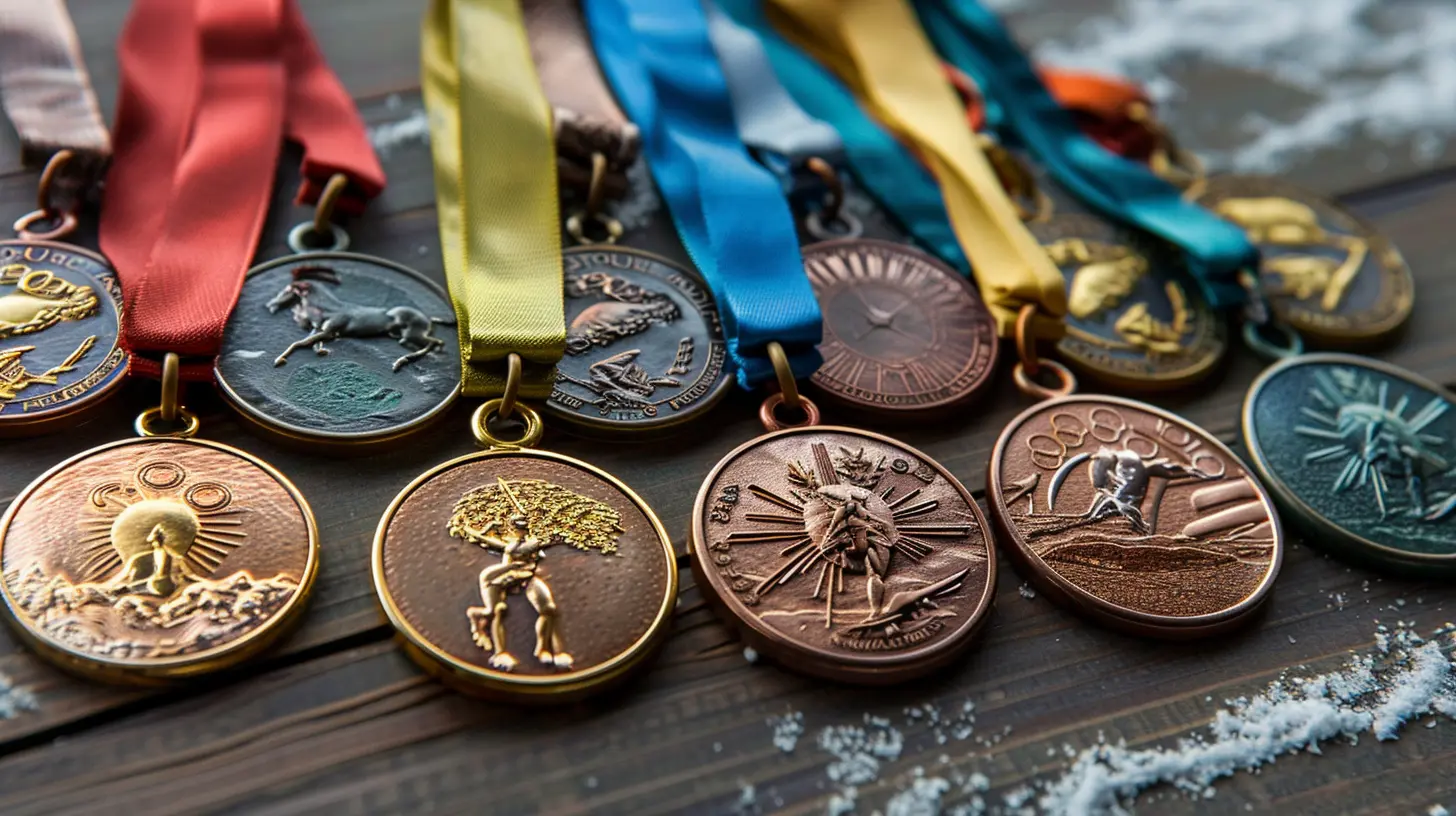
🏅 The Origins: Where It All Began
The Olympic Games took their baby steps in ancient Greece, long before Wi-Fi and instant replays. But back then, athletes didn’t get medals. Nope. They were crowned with olive wreaths—simple, yet deeply symbolic. It wasn’t until the modern Olympic Games kicked off in Athens in 1896 that medals began to steal the spotlight.Fun fact: The very first modern Olympics had no gold medals. That’s right. Winners got silver medals and an olive branch. The "gold standard" didn’t show up until the 1904 St. Louis Games.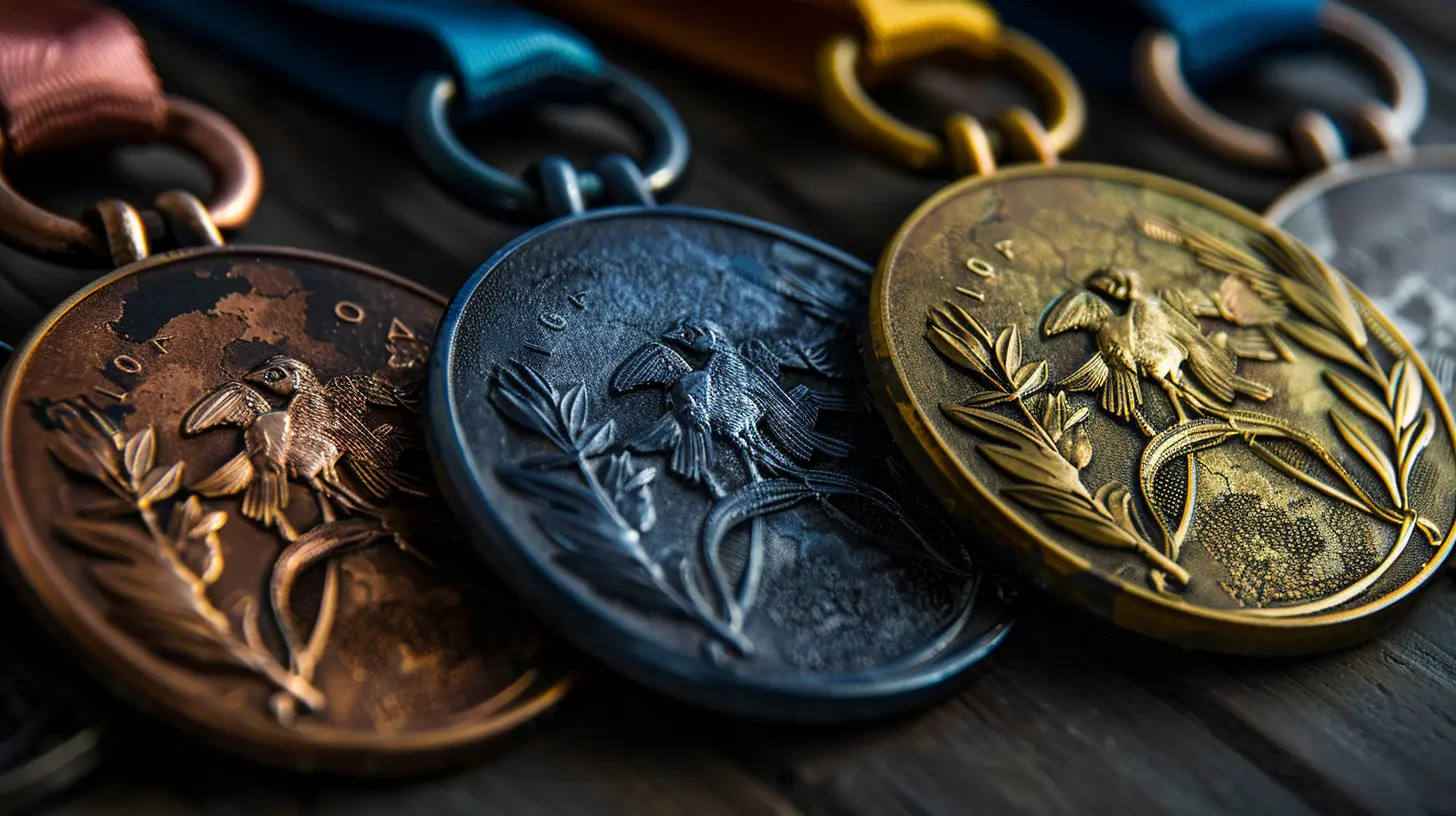
🎨 Crafting a Legacy: The Evolving Designs
Let’s get one thing clear: Olympic medals are more than metal—they’re moving pieces of art. And over the years, they’ve morphed from plain to jaw-droppingly complex, reflecting the pulse of the times.🔹 1896 Athens: Humble Beginnings
These medals were silver for winners and bronze for second place. On the front? Zeus holding Nike, the goddess of victory. It captured Greek mythology and the spirit of athletic competition. No over-the-top embellishments—just raw, classical elegance.🔹 1904 St. Louis: The Birth of Gold
Gold made its grand entrance here—and thank the medal gods it did. These medals were round, relatively small, and depicted a victorious athlete. But let’s be honest, they weren’t exactly showstoppers. Think of them as vintage vinyl—classic but not flashy.🔹 1928 Amsterdam to 1968 Mexico City: The Golden Template
Let’s talk about Giuseppe Cassioli. The Italian artist's design, first used in 1928, became the medal blueprint for over four decades. They featured Nike standing in front of a Roman amphitheater. Yep, a Roman one. Why not a Greek stadium? That debate's still making rounds. But this design stuck like glue, even though it didn’t sit right with everyone.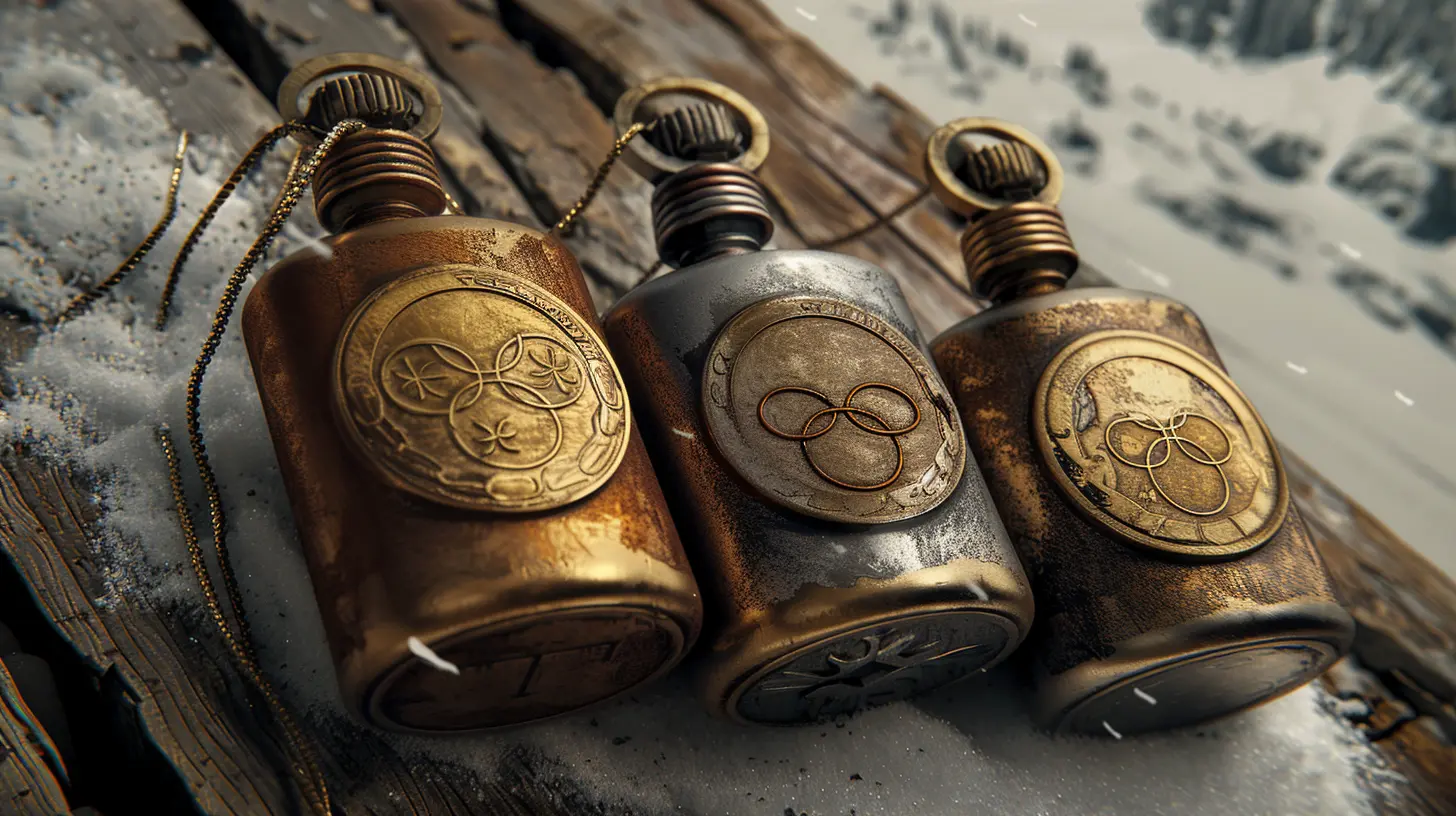
🔄 Design Shake-Ups: Breaking The Mold
Sometimes, tradition’s gotta give way to innovation. And boy, did the Olympic Committee finally hit the “refresh” button.🔹 1972 Munich: A Fresh Look
Munich kept Cassioli’s front design but added a modern, abstract design to the back. It was the first subtle sign that change was coming. It was like saying, “We respect the past, but we’re eyeing the future.”🔹 2004 Athens: Back to the Roots
Now this one was a turning point. Athens—proud of its Greek heritage—ditched the Roman coliseum backdrop and replaced it with the Panathenaic Stadium, a truly Greek setting. Finally, a medal that made sense! It was like correcting a historical typo that lasted 76 years.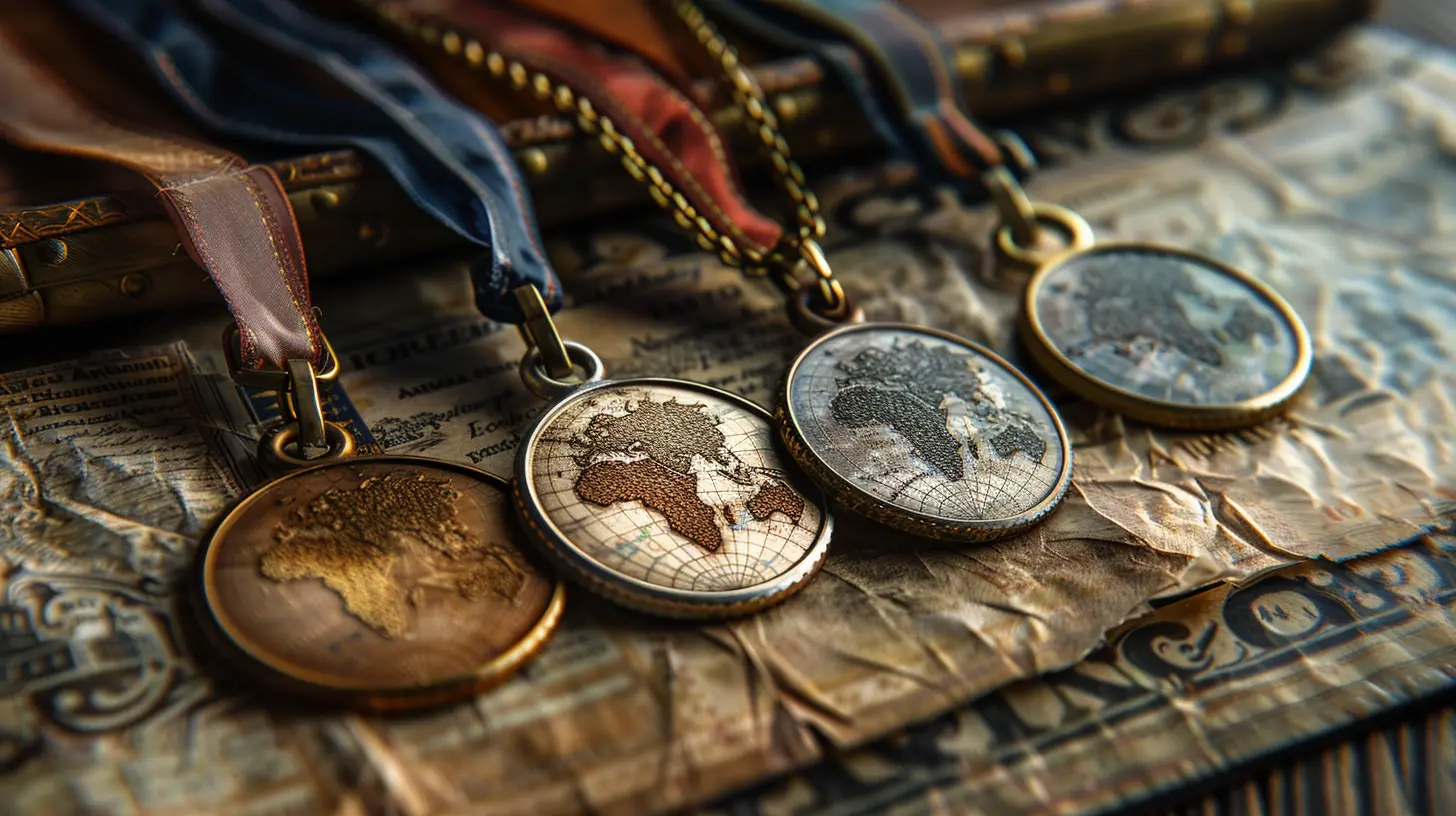
⚒️ Material Matters: More Than Just Bling
Before you assume Olympic medals are made entirely of gold, let’s clear the air.Gold medals? They haven’t been fully gold since 1912. Modern "gold" medals are mostly silver with a thin gold plating—usually about 6 grams worth. Bronze medals? They’re mostly copper with a dab of tin. Not exactly Fort Knox level, but still incredibly symbolic.
What really adds value isn’t the material—it’s the story, the moment, the blood, sweat, and glory attached to that hunk of metal.
🌍 Medals That Mirror the World
Olympic medals aren’t designed in a vacuum. They reflect the host country’s culture, identity, and sometimes even politics. Let’s hit some highlights.🔹 1992 Barcelona: A Touch of Picasso
This one looked straight outta a modern art gallery. Abstract, energetic, and bold. Not everyone loved it, but it definitely turned heads and added flair to the Games.🔹 2008 Beijing: Carved in Jade
Now this was genius. The Beijing medals had a ring of white jade on the back—a total nod to Chinese culture and its deep-rooted symbolism in harmony, purity, and nobility. Fusion of east and west in one awe-inspiring piece.🔹 2016 Rio: All About Sustainability
Brazil said, “Let’s save the planet!” and rolled out eco-friendly medals. The gold ones were free of mercury, and the ribbons were made from recycled plastic bottles. Even the podiums were made from sustainable wood. Talk about gold with a green heart.👨🎨 The Artists Behind the Glory
Rarely do we talk about the people who actually design these treasures. But every medal goes through a rigorous design process—it’s sketched, sculpted, and approved after multiple rounds of critique. It’s a blend of history, culture, and meticulous craftsmanship.Some host nations run national design competitions, while others employ elite artists. Either way, these designers create symbols that’ll outlast trends, politics, and even the athletes themselves.
🧳 Tokyo 2020: Recycling History
The Tokyo Olympics, held in 2021 (because, ya know, pandemic), broke new ground. Their medals were made entirely from recycled electronics—yep, your old phone might’ve helped make one.More than 78,000 tons of gadgets were collected over two years. The result? Stunning medals made from 100% recycled materials. Talk about turning trash into treasure!
🔭 What About Paris 2024?
Let’s sneak a peek at what’s coming. The Paris 2024 medals are already hyped to be stunning—crafted with a piece of the Eiffel Tower embedded in each one. Are you kidding me? That's like combining the Mona Lisa with a piece of the moon. Expect elegance, history, and a heavy dose of French flair.🎖️ Not All Medals Are Created Equal
Every Olympic medal is unique to its time and place. But certain ones have reached icon status. Whether because of their design, the drama of the Games, or the athletes who won them.🏆 Jesse Owens – 1936 Berlin
His four gold medals practically screamed defiance in the face of Nazi propaganda. The medals were fairly standard in design but became legendary by association.🏆 Michael Phelps – Beijing 2008
The jade-inlaid medals he pocketed during his eight-gold-medal performance? Priceless. Not just for their rarity, but because they marked the peak of human performance.🤔 So, Why Does This Even Matter?
Some might say, “Hey, a medal’s a medal.” But that’s missing the point. Olympic medals are time capsules. Each one carries the heartbeat of a moment in history, a culture in motion, and a world watching in awe.They don’t just hang around athletes’ necks—they hang in museums, family homes, and hearts forever. They’re proof that greatness was achieved, and a story worth telling.
📸 Medals in Pop Culture
Ever noticed how medals pop up in movies, Instagram feeds, and even political speeches? They’re more than just decoration—they’re symbols of pain, perseverance, and pride. You’ll find athletes biting them, holding them up with tears in their eyes, or silently tucking them away as private treasures.🧠 The Psychology of the Podium
Ask any athlete: the medal isn’t just a goal—it’s an obsession. And believe it or not, studies show bronze medalists are often happier than silver ones. Why? Silver feels like "the one that got away," while bronze says, "thank goodness I made it up here." Wild, right?🔚 Final Thoughts: More Than Metal
Olympic medals may glitter under the stadium lights, but their true shine comes from the stories they carry. They tell tales of heartbreak, triumph, nations rising, and personal glory. They represent more than just a win—they’re the permanent ink on the skin of history.So the next time you see an athlete on that podium with tears streaming down their face and a medal clutched tightly in their hands—know that it’s not just metal. It’s memory. It’s meaning. It’s magic.
all images in this post were generated using AI tools
Category:
OlympicsAuthor:

Easton Simmons
Discussion
rate this article
1 comments
Arwenia McKinstry
Olympic medals are more than awards; they encapsulate history and culture, reflecting the spirit of their respective Games. A true legacy!
August 6, 2025 at 3:40 AM

Easton Simmons
Thank you for your insightful comment! Olympic medals truly embody the rich history and cultural significance of the Games, making them a lasting legacy.

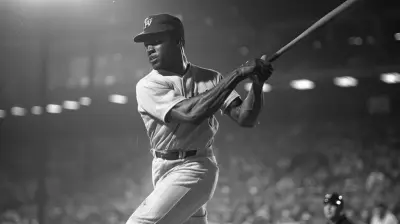
![The Road to Redemption: How [Player Name] Overcame Challenges to Excel](/pictures/blog/small/the-road-to-redemption-how-player-name-overcame-challenges-to-excel_1.webp)